
August 2021, Volume 2, Issue 10
Office of Elementary and Secondary Education (OESE)
Office of State Grant and Program Support Newsletter
 |
|
ANNOUNCEMENT: Watch for a new name for this newsletter, coming next month!
|


 |
|
REMINDER: If you received an invitation to complete the 2021 Grantee Satisfaction Survey, please consider providing feedback in the coming days. Survey invitations were sent by email on June 8. Reach out to your program officer with questions.
|

From the Deputy Assistant Secretary
Letter From Ruth Ryder, Deputy Assistant Secretary for the Office of State Grant and Program Support

Dear Partners and Stakeholders:
And just like that, we are talking about Back to School! It always amazes me how fast summer seems to go by each year. I sincerely hope you had time this summer to rejuvenate and reflect on the past year and a half. As we so often say, it’s been a time like no other. We’ve all learned a great deal about ourselves and our community.
One of my main observations is how resilient everyone has been – with every change in circumstances, you all have evaluated, adjusted, and renewed your efforts to ensure that underserved students are getting the supports they need! I also want to recognize the incredible work of our team here in OESE. Over the course of the year, we have distributed unprecedented amounts of funds; provided useful technical assistance and guidance; collaborated with our partners in other offices to ensure coordinated, comprehensive technical assistance; and worked with our technical assistance centers to ensure you are getting the support and assistance you need. I feel honored and privileged to work with such an amazing group of professionals!
Like all of you, we are hard at work planning for the upcoming 2021-2022 school year with an OESE-led Back to School event happening August 9-13. Although this is a closed event designed specifically for state educational agency program directors and their staff, event materials will be made available on the Safer Schools and Campuses Best Practices Clearinghouse website. We are excited to coordinate this cross-agency week of information sharing to help you prepare for the school year ahead. See more information below about the week’s events! The materials will include information from across federal programs and agencies, and we hope these provided materials will help as we move into the new school year.
However, you don’t need to wait for the OESE Back to School event: this newsletter has a lot of valuable resources to help you prepare for the new school year. Some of these resources include the Centers for Disease Control and Prevention’s (CDC) Helping young children and parents transition back to school and return to school resources from the National Comprehensive Center.
While you prepare for the return of your students, we are reviewing and approving American Rescue Plan (ARP) ESSER state plans. To date, we have received 42 plans and approved 17 of them. The state plans provide information on how states will use the ARP ESSER funds to support students who have been disproportionately impacted by COVID-19. You can find the submitted and approved state plans on this website.
Have a great end of the summer and an amazing start to a new school year.
Best,
Ruth Ryder
|

Featured Technical Assistance: Back to School Resources
 
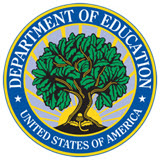
Back to School Week
To support our grantees as they prepare for the 2021-2022 school year, OESE will sponsor Back to School Week from Aug. 9 - 13, featuring resources and events to support the safe reopening of schools across the country. Back to School Week will feature discussions with OESE and other offices across the U.S. Department of Education, including the Office of Special Education Programs; the Office of English Language Acquisition; the Office of Career, Technical, and Adult Education; the Office for Civil Rights; and the Institute of Education Sciences. It will also highlight resources on accelerating academic achievement for all students, ensuring safe learning spaces, engaging students and families, reflecting on lessons learned from the past year, and keeping equity at the center of our work. We emphasize different approaches and strategies to identifying and addressing the needs of all students, and in particular, underserved student groups who may be most at risk during this critical time of reengagement for students and families. We will also highlight how relief funds can support state and local efforts. The themes for each day are:
Monday, Aug. 9: Accelerating Learning for All Students and Student Groups – Providing resources and examples of successful approaches to accelerate learning for all students, particularly the most underserved students, to help support and extend the plans that schools, districts, and states have developed.
Tuesday, Aug. 10: Promoting Health and Safety for Students, Staff, and Families – Providing updated resources and guidance on mitigation strategies to ensure a safe school environment, including information from the Centers for Disease Control and Prevention.
Wednesday, Aug. 11: Engaging Students and Families With a Focus on Underserved Populations That the Pandemic May Have Further Disengaged From School – Providing resources and examples to bring all students and families fully back to the routines of a face-to-face instructional mode, including addressing (1) student social, emotional, mental health, and behavioral needs to make sure students are ready to learn and best positioned to address the impact of lost instructional time; and (2) parent engagement to ensure robust and ongoing interactions with parents to support students in a holistic manner.
Thursday, Aug. 12: Lessons Learned to Inform Program Planning for the 2021-22 School Year – Providing resources based on state and local efforts to date to keep schools open safely and address student, family, and staff needs (leveraging lessons learned from schools that have been opened for in-person learning).
Friday, Aug. 13: Keeping Equity at the Center of Planning and Implementation – Providing resources and information on strategies to consider for ensuring equitable access to a high-quality education for all students and student groups.
All of the content will be posted on https://bestpracticesclearinghouse.ed.gov/. It will be publicly available after Aug. 16.
|


Meet Department Staff Member Victoria Hammer
Meet Victoria Hammer, Director of Evidence-Based Policy for the Office of Formula Grants in OESE, who works on the Safer Schools and Campuses Clearinghouse and Back to School Week.
How long have you been at the Department?
- I will have been at the Department for 13 years in October.
What do you most enjoy about working at the Department?
- I enjoy the bird’s eye view of education across the country and working with colleagues to identify ways we at the federal level can best support the field.
What is one thing you would like to see happen as a result of OESE's collective efforts this year?
- I would like to see OESE’s collective efforts — the Back to School Week, the Clearinghouse, the Lessons from the Field webinars, the Summer Learning and Enrichment Collaborative, and all of the guidance and other resources — help give students, educators, and families confidence that they can and will have a successful 2021-22 school year.
|

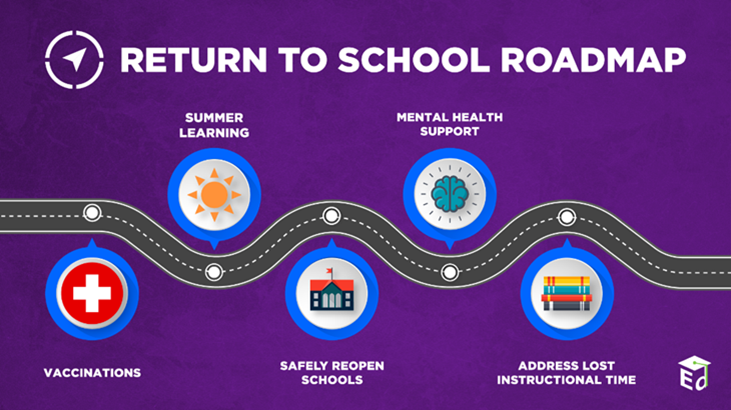 |


Return to School Roadmap
On Aug. 2, the Department released the “Return to School Roadmap,” a resource to support students, schools, educators, and communities as they prepare to return to safe, healthy in-person learning this fall and emerge from the pandemic stronger than before. The Roadmap provides key resources and supports for students, parents, educators, and school communities to build excitement around returning to classrooms this school year and outlines how federal funding can support the safe and sustained return to in-person learning. As part of the Roadmap launch, the Department released:
- A fact sheet for schools, families, and communities on the Return to School Roadmap, reviewing the three “Landmark” priorities, and elevating schools and districts that are addressing each in effective ways.
- A guide for schools and districts outlining what schools can do to protect the health and safety of students, including increasing access to vaccinations and steps for implementing the CDC’s recently updated K-12 school guidance.
- A checklist that parents can use to prepare themselves and their children for a safe return to in-person learning this fall, leading with vaccinating eligible children and masking up if students are not yet vaccinated.
Please click here for additional information on the Roadmap, including the Department’s plans to provide in the coming weeks additional resources to schools, districts, and directly to parents and students.
|

Centers for Disease Control and Prevention Updates
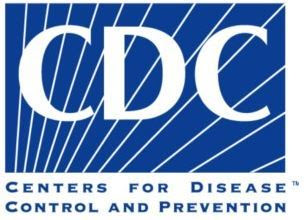
CDC Guidance for Child Care, Schools, and Youth Programs
The CDC maintains guidance for child care, schools, and youth programs to plan, prepare, and respond to the COVID-19 pandemic. The guidance addresses operating schools during COVID-19, decision-making indicators for reopening, testing, and contact tracing, and communication tips, among others.
Lessons from the Field Webinar Series: Indoor Air Quality and Ventilation in America’s K-12 Schools: Guidance and Strategies for Improved Results
This webinar by the Centers for Disease Control and Prevention, the Environmental Protection Agency, and the U.S. Department of Education featured updates on maintaining safe indoor air quality in schools. Following the federal agency updates, a panel of practitioners discussed strategies they have utilized to improve indoor air quality and ventilation in response to the COVID-19 pandemic. To access the webinar materials, click here.
COVID-19 pandemic: Helping young children and parents transition back to school
Transitioning back to early childhood programs or school — or starting them for the first time — can create extra challenges during a pandemic. Learn what parents and teachers can do to help children make a successful transition to in-person learning and care. The CDC provides helpful strategies and important reminders in this feature article.
|

Improving Ventilation in Schools, Colleges, and Universities to Prevent COVID-19
Clean air is essential for living and learning, and effective ventilation is an important part of COVID-19 prevention. This new resource from the Department provides guidance on improving air quality in schools.
|

Technical Assistance Resources: Supporting School Personnel

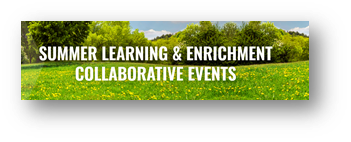
Summer Learning & Enrichment Collaborative Events Archive
The Summer Learning & Enrichment Collaborative (SLEC) continues to help states, school districts, and their partners to develop summer and out-of-school-time programs that ignite a love for learning, exploration, and enjoyment for students, particularly those most impacted by the pandemic. Explore the events archive to view recordings from past sessions on building community partnerships through Tribal consultation, serving homeless children and families through summer programs, planning for the use of new federal resources, establishing workforce programs for high school students, engaging families in developing responsive enrichment programming, and utilizing high-dosage tutoring for learning acceleration, among other topics. The SLEC is sponsored by the National Comprehensive Center in partnership with the U.S. Department of Education and national partners.
|
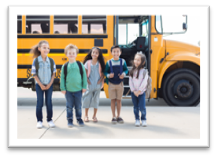
Return to School Collection
This resource collection from the National Comprehensive Center is designed to help Regional Centers, state and local educational agencies, educators, and parents as they collectively navigate the unpredictable path back to school. In addition to the resources in the collection, the National Center has curated a list of return to school resources from national organizations and educational institutions.
|

COVID-19 Recovery and the Strategic Use of Funds from the American Rescue Plan Act of 2021
This multimedia package was compiled from a workshop with state educational agencies (SEAs) on the strategic use of funds from the American Rescue Plan Act (ARPA) of 2021 lead by the Region 2, 13, and 15 Comprehensive Centers, in collaboration with the National Center. The workshop was designed to discuss the implications of ARPA, assist SEAs in strategic planning with featured examples of states’ approaches, and provide opportunities for state-specific and cross-state planning and discussion. A discussion and planning tool is provided for SEA use.
|

Learning Recovery and a Diverse Workforce
In this resource brief by the National Comprehensive Center, states and districts can find strategies that may help increase their access to diverse talent for out-of-school time programming and ongoing learning recovery efforts. The strategies draw from the latest research on learning recovery and evidence indicating that students of color benefit when served by educators of the same race. The ARP provides the opportunity for innovative approaches to staffing.
|
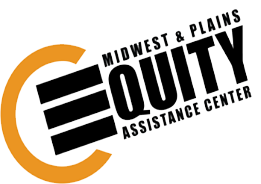
Teacher Perspectives on Supporting Students to Feel Welcome and Safe in Socially Challenging Times
Students experiencing racism and xenophobia at school often feel unsafe and vulnerable in their learning environments. These experiences can interfere with a student’s learning and disrupt classroom and school dynamics. This vodcast by the Midwest and Plains Equity Assistance Center (EAC Region III) features four seasoned secondary educators, who offer their perspectives and strategies for helping students feel welcome, safe, and able to learn.
|
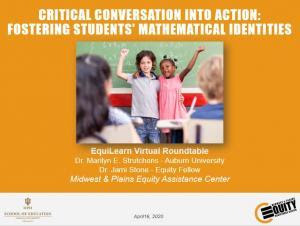
Critical Conversation into Action – Fostering Students’ Mathematical Identities
In this
![]()
About the Author
Ruth Ryder is the Deputy Assistant Secretary for the Office of Office of State Grant and Program Support in the Office of Elementary and Secondary Education (OESE) at the U.S. Department of Education. In this role, Ms. Ryder oversees a broad range of management, policy, and program functions related to formula and discretionary grant programs under the Elementary and Secondary Education Act, as amended by the Every Student Succeeds Act (ESEA). Ms. Ryder was previously the deputy director of the Office of Special Education Programs in the Office of Special Education and Rehabilitative Services, which she joined in 1988. Prior to joining the Department, Ms. Ryder was a program administrator in a Washington state school district. There she had responsibility for the Elementary and Secondary Education Act Title 1 and Title II programs, state-remediation, gifted education, outcome-based education, and state- and district-wide testing programs. Ms. Ryder has a bachelor’s degree in psychology and elementary education and a master’s degree in special education.
Read next
Projects & Events
Bruman Group Spring Forum | April 29th - May 1st
USED & White House
President Signs Executive Order to Dismantle ED
USED & White House
ED Releases Guidance on Inclusive Practices Under IDEA and ESEA
| |
























